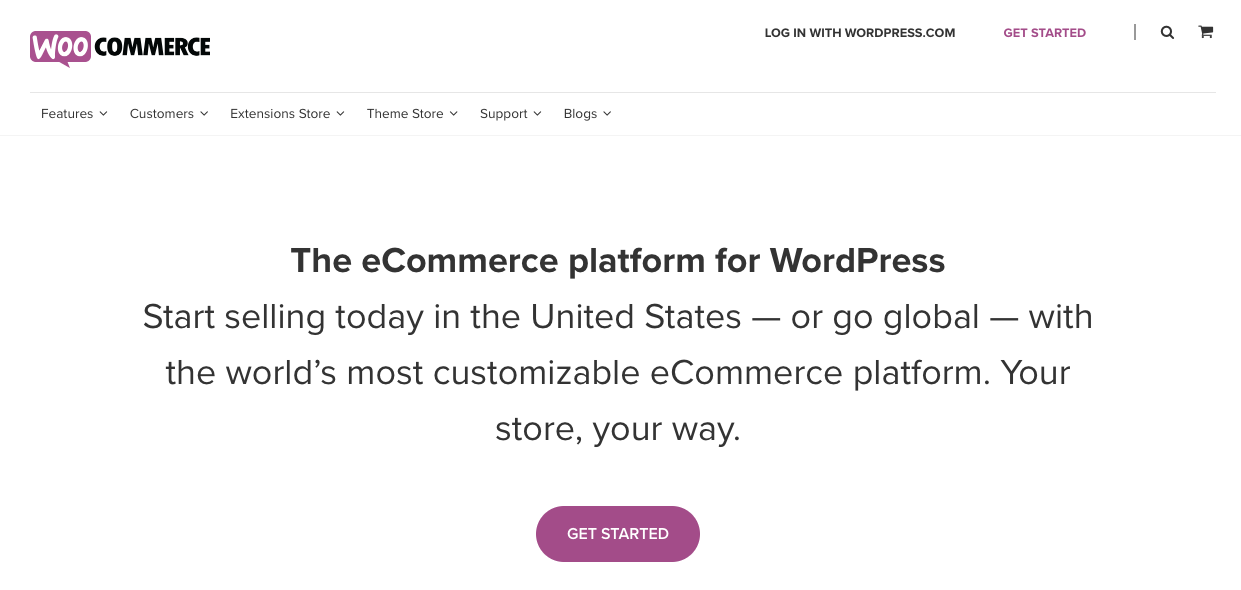
Each platform has its own advantages but asking the right questions for your specific business needs is critical to your brand’s
future growth.
Get the infographic!
So, you’ve built the product, tested it with sample markets and you’re now ready to build your online store. You have a brand, inventory, and go-to-market business model. Now, it's time to decide which e-commerce platform you'll use to sell your products.
There are countless platforms out there for e-commerce whether you’re a small business or retail giant, and which one is right or wrong ultimately depends on your key needs of your customers and how your business is going to exceptionally support their needs. Here are four leading platforms to consider — with the overviews to help you weight the good and the bad of each one.
Shopify
Shopify powers more than half a million businesses with over a million active users. With 40 BN+ worth of products already have been sold on their platform, they’re positioned as the market leader for e-commerce success.
The Pros: Suitable for newbies and web aficionados alike, Shopify can be set up quickly, has visually-engaging templates, performs fast and is budget-friendly, with packages starting at only $29 a month. It has a wide variety of themes to choose from and is compatible with a lot of apps that let you monitor inventory, dropshipping, launch retargeting campaigns and more through the Shopify app store.
The Cons: The biggest downside to using Shopify is the transaction fee tacked on if you use a third-party merchant account or e-commerce payment provider instead of their in-house solution powered by Stripe. Many useful extensions require an additional investment. Additionally, if you don't know how to work with "Liquid," its proprietary coding language, you'll have to pay for customization.

Source: Shopify.com
Magento
Owned by Adobe, Magento is an open-source e-commerce platform known for being reliable and scalable that counts large companies such as Coca-Cola, HP, Canon and Burger King as customers.
The Pros: A feature-rich, modular platform made to grow with your business, Magento has tons of extension that allow for detailed customization and is available in a hosted version, which can be rented, or a self-hosted setup. Its basic version is free.
The Cons: While Magento is the right choice for big businesses with very high-volume e-commerce stores, most small and mid-sized businesses will find its complicated setup, expensive price tags and highly technical programming requirements daunting. An enterprise version of Magento costs a minimum of $20,000 per year.

Source: magento.com
WooCommerce
WooCommerce’s no-cost, open-source and easy-to-use WordPress plugin that includes a functional shopping cart with a secure payment gateway that works extremely well together.
The Pros: Installing and using WooCommerce is free. It's a great option for sellers who prefer using WordPress websites and only plan to have a smaller, lower volume e-commerce site.
The Cons: You must know WordPress to use WooCommerce, which requires an additional plugin to have a multi-vendor online store. WooCommerce's greatest fault is its lack of scalability, meaning when our business, number of products and customers begins to outgrow it, WooCommerce bogs down big time.

Source: woocommerce.com
BigCommerce
From mom-and-pop stores to the auto giant Toyota, BigCommerce has fueled e-commerce operations of all sizes. With lots of customizable templates to choose from, good customer support and informative tutorials to walk you through using it, BigCommerce is an easy-to-use platform.
The Pros: A great platform for anyone who wants an e-commerce site packed with customizable features, BigCommerce eliminates the need for programming code, complex plugins, and other
technical hurdles.The Cons: BigCommerce doesn't offer much of the support needed for multi-vendor stores like Amazon. It also lacks free themes, meaning you have to invest in a premium option.
There are no one-size-fits-all solutions that apply to every e-commerce business. Different operational models, business sizes and other nuances call for e-commerce platforms that suit your specific needs. Whether you decide on having a web development team to package it and serve it up optimized or adopt a do-it-yourself approach, the most critical aspect of this process is determining your business’s key growth goals, and determining the most effective ways of leveraging your web platform’s marketing tools to achieve them.

Source: bigcommerce.com
-
Currently looking for a dynamic, award-winning agency to help set you on the right path for 2020 go-to-market success?
Let's Get to Work.
Have an unsolvable problem or audacious idea?
